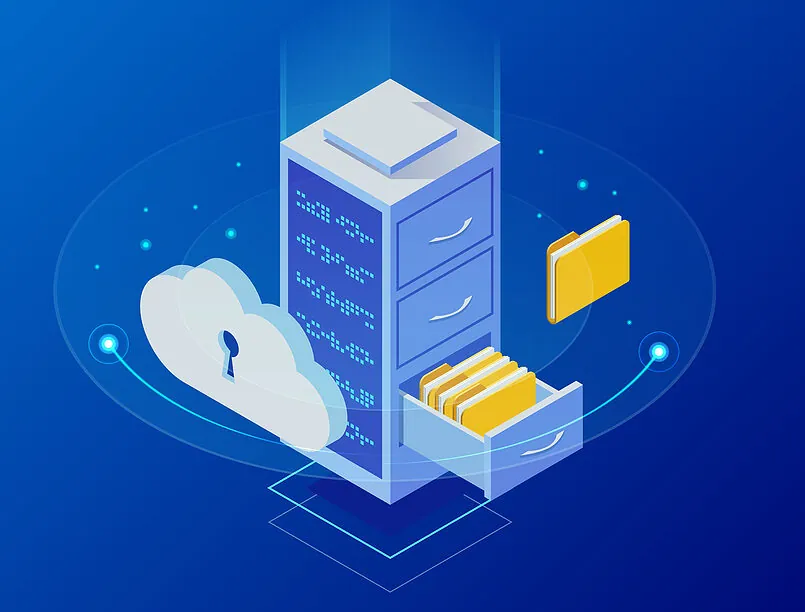
Why Supply Chains Need Clean, Real-Time Edge Data for AI Accuracy
This is part I of the Smarter Supply Chain Series
Part II: AI Adoption in Supply Chains: From Agents to Mobile Execution
Part III: Data Integrity in the Supply Chain: The Hidden Factor Behind AI Accuracy
Part IV: AI Readiness For Supply Chains Starts With Mobile Barcoding
If your edge data is messy, your AI will generate inaccurate results instead of giving you outputs you can trust. The first mile of capture on scanners and mobile devices determines how accurate your ERP, analytics, and AI agents can be. This is not a tooling fad. Even highly mature AI programs report that data availability and quality remain top barriers, as shown in a recent Gartner survey. Fix the inputs at the source and everything downstream improves.
What “Edge Capture” Really Means
Edge capture is the moment a physical event becomes a digital fact. Think receiving, putaway, picks, WIP moves, and shipping confirmations recorded by scan-first workflows. In some operations, RFID and sensors add extra signals, like dwell times or gate movements. When each event has the right contex (e.g. item, lot, quantity, location, user, time) you create a trustworthy stream that your systems can act on without second-guessing. Use the next two bullets as your blueprint: the first lists the non-negotiable inputs that form your system of record, and the second lists optional context that speeds exception handling and strengthens analytics.
- Typical capture signals: barcode or RFID scans at receiving, inventory moves, picking, and cycle counts
- Helpful add-ons when appropriate: photo evidence for exceptions, geolocation in yards and docks
Why Accuracy And Timeliness Set The Upper Bound
Accuracy seems obvious, yet small errors at the dock ripple into missed promise dates, expedites, and noisy dashboards. Timeliness matters just as much. If your systems only catch up at end of shift, you are always reacting to yesterday. Real-time or near-real-time updates keep planning, customer service, and AI agents aligned with what is actually happening on the floor. Put simply, accuracy defines what is true and timeliness defines when it is true, and together they set the upper bound on your ERP, analytics, and AI outcomes.
How Edge Data Flows Into Oracle
A good transaction is simple: scan, validate, then post. In practice, the best implementations validate against current master data and business rules before committing to Oracle E-Business Suite (EBS) or Oracle Fusion Cloud SCM. From there, events flow into analytics so teams can monitor performance, detect exceptions, and train better models.
- Resiliency patterns that prevent headaches: store-and-forward when offline, queued retries, and idempotent posts so one action creates one record
- Where insights are built: curated operational signals feed Oracle Fusion Data Intelligence, then surface through Oracle Analytics AI & ML capabilities for faster, more confident decisions
RFgen’s Angle: Engineer Out GIGO At The Point Of Work
Cleaner inputs start with workflows people actually like using, because they mirror how the work really happens. RFgen designs role-based, scan-first UX that matches each team’s SOPs, terminology, and sequence of steps, so users don’t have to translate the system to the floor (or vice versa). That alignment is a big reason adoption sticks and data quality rises.
- Role and process aligned: Receivers, pickers, and cycle counters see only the fields and steps they need, in the order they perform them.
- SOP-true prompts: Labels, UOM, lots, and locations are validated the same way your teams are trained to do it, just faster and with fewer taps.
- Context aware: Screens adapt to task and condition (e.g., damage photo on exception, geolocation at yards/docks, carton/license plate when required).
- Scan-first speed: Minimal typing, clear error messages at the point of scan, and idempotent posts so one action creates one clean record.
- Works where work happens: Store-and-forward keeps transactions moving through dead zones, freezers, or yards without re-keying later.
The result is fewer corrections and reconciliations, and far more reliable data flowing into Oracle because the workflow fits the job, people use it consistently, and GIGO is engineered out at capture.
Learn more about RFgen’s Oracle offerings at Oracle SCM Cloud Mobility and the Mobile Barcode Solution for Oracle EBS, and see how this supports smarter warehouse operations.
Quick Answers to Your Common Objections
It is common to worry about user adoption and integration risk. The most reliable way to handle both is to start small, prove value, and expand.
- “We can clean data later.” Post-facto cleansing is expensive and partial. Preventing defects at capture is cheaper and sticks.
- “Integration is risky.” Use prebuilt Oracle-validated transactions and roll out in phases, starting with receiving and inventory moves.
- “Users won’t adopt.” Scan-first design with fewer taps and clear exception handling lowers training time and boosts consistency.
A Simple Architecture
High-fidelity capture turns into high-quality features: on-hand accuracy by location and lot, throughput and dwell times, pick and putaway lead times, ASN match rates, and exception patterns like cycle count variances. Those features power better ETA predictions, earlier anomaly detection, tighter labor planning, and smarter slotting. In Oracle’s stack, curated operational data moves through Fusion Data Intelligence and is explored with Oracle Analytics so teams can trust what they see and act faster.
- Feature examples that benefit immediately: on-hand accuracy, lead times, vendor performance, exception patterns, and travel-path signals for slotting
- Learn more with our “Why Supply Chain AI Tech Needs Mobile Data to Take Off: Q&A with Saumya Saxena” article.
Scanners and mobile apps capture events. A validation layer enforces rules and labeling standards. Validated transactions post to Oracle Cloud SCM or EBS. Streaming or ELT pipelines land those events in Fusion Data Intelligence, which models the data for analytics in Oracle Analytics. From there, AI agents and assistants can support planning, exception handling, and automation with confidence because the inputs are clean and current.
What To Look For In A Solution
Your checklist should balance user happiness with IT confidence. People need fewer taps and clear prompts; IT needs predictable integrations and auditability.
- Proven integrations with Oracle Cloud SCM and EBS that honor existing rules
- Role-based mobile UX with scan-first design and low training time
- Offline and online resiliency with conflict resolution
- Validation against label standards, lots, units of measure, and locations
- Audit trails for user, device, time, and place that carry into analytics
- Time-to-value measured in weeks, not quarters
A Day-One Pilot Plan
The easiest path to value is a tight pilot that proves the model. Pick one flow, switch to scan-first, validate before posting, and stream events to analytics. Use the KPIs above to verify impact, then expand.
- Choose receiving plus putaway as the pilot scope.
- Turn on scan-first prompts and label validation.
- Enable store-and-forward so work continues even in dead zones.
- Post via prebuilt Oracle transactions with minimal configuration.
- Land events in Fusion Data Intelligence and visualize lagging and leading indicators in Oracle Analytics.
- Review weekly, fix rough edges, and extend to picks, WIP moves, and cycle counts.
Results To Aim For After A Focused Pilot
Set realistic, time-bound targets and measure them weekly. Early wins create momentum and fund the next phase.
- 30–70% reduction in scan and entry errors
- 2–5% lift in inventory accuracy within one to two quarters
- 10–25% faster picks and receipts with guided workflows
- Sub-5-minute freshness for priority events into analytics
Actual results vary by baseline and scope, but these ranges are common when defects are prevented at the source and signals flow quickly into analytics.
Oracle AI World: Sessions That Connect Directly To Edge Capture
This year’s Oracle AI World shows how data, analytics, and agents come together. If you’re attending, start with the event overview at Oracle AI World and browse the content areas to frame your plan.
- Modernize SCM with Fusion Data Intelligence plus AI agents: connect scan-first operational data to agent-driven actions using AI Agent Studio for Fusion Applications and the modeling pipelines in Fusion Data Intelligence.
- Build AI-ready assets in Oracle Analytics: this session—LRN3469—focuses on transforming raw signals into governed, trustworthy datasets that analytics and AI can use immediately. You can also explore the broader Oracle AI World catalog for Analytics sessions.
- Any Document, Any Language: for inbound ASNs, BOLs, and COAs, pair OCR with barcode validation using OCI Document Understanding and this primer on what document understanding is to reduce manual entry and enrich features.
If you are attending, you can also Meet RFgen at Oracle AI World 2025.
The Takeaway
Edge capture is the quality gate that decides whether analytics and AI can be trusted. When you combine scan-first, validated workflows from RFgen for Oracle Cloud SCM or RFgen for Oracle EBS with Oracle’s analytics stack, you move from “garbage in, garbage out” to “clean in, smart out.” That is how you keep promises, prevent fire drills, and make AI agents useful in the real world.







